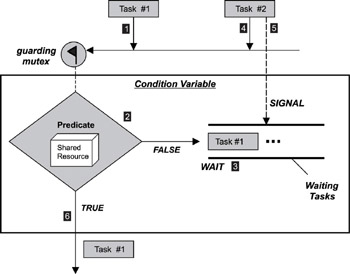
Master the fundamental concepts of real-time embedded system programming and jumpstart your embedded projects with effective design and implementation practices. This book bridges the gap between higher abstract modeling concepts and the lower-level programming aspects of embedded systems development. You gain a solid understanding of real-time embedded systems with detailed practical examples and industry wisdom on key concepts, design processes, and the available tools and methods.
Delve into the details of real-time programming so you can develop a working knowledge of the common design patterns and program structures of real-time operating systems (RTOS). The objects and services that are a part of most RTOS kernels are described and real-time system design is explored in detail. You learn how to decompose an application into units and how to combine these units with other objects and services to create standard building blocks. A rich set of ready-to-use, embedded design “building blocks” is also supplied to accelerate your development efforts and increase your productivity.
Experienced developers new to embedded systems and engineering or computer science students will both appreciate the careful balance between theory, illustrations, and practical discussions. Hard-won insights and experiences shed new light on application development, common design problems, and solutions in the embedded space. Technical managers active in software design reviews of real-time embedded systems will find this a valuable reference to the design and implementation phases.
Qing Li is a senior architect at Wind River Systems, Inc., and the lead architect of the company’s embedded IPv6 products. Qing holds four patents pending in the embedded kernel and networking protocol design areas. His 12+ years in engineering include expertise as a principal engineer designing and developing protocol stacks and embedded applications for the telecommunications and networks arena. Qing was one of a four-member Silicon Valley startup that designed and developed proprietary algorithms and applications for embedded biometric devices in the security industry.
Caroline Yao has more than 15 years of high tech experience ranging from development, project and product management, product marketing, business development, and strategic alliances. She is co-inventor of a pending patent and recently served as the director of partner solutions for Wind River Systems, Inc.
About the Authors
8.5.3 Typical Uses of Condition Variables
8.5.3 Typical Uses of Condition Variables
Listing 8.1 illustrates the usage of the wait and the signal operations.
Listing 8.1: Pseudo code for wait and the signal operations.
Task 1
Lock mutex
Examine shared resource
While (shared resource is Busy)
WAIT (condition variable)
Mark shared resource as Busy
Unlock mutex
Task 2
Lock mutex
Mark shared resource as Free
SIGNAL (condition variable)
Unlock mutex
Task 1 on the left locks the guarding mutex as its first step. It then examines the state of the shared resource and finds that the resource is busy. It issues the wait operation to wait for the resource to become available, or free. The free condition must be created by task 2 on the right after it is done using the resource. To create the free condition, task 2 first locks the mutex; creates the condition by marking the resource as free, and finally, invokes the signal operation, which informs task 1 that the free condition is now present.
A signal on the condition variable is lost when nothing is waiting on it. Therefore, a task should always check for the presence of the desired condition before waiting on it. A task should also always check for the presence of the desired condition after a wakeup as a safeguard against improperly generated signals on the condition variable. This issue is the reason that the pseudo code includes a while loop to check for the presence of the desired condition. This example is shown in Figure 8.15.
Figure 8.15: Execution sequence of wait and signal operations.





